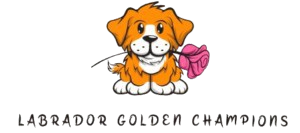Title: Dwarfism in Golden Retrievers: Symptoms and Care Guide
Introduction:
Golden Retrievers are known for their friendly demeanor, intelligence, and graceful appearance. However, like all breeds, they can be prone to certain health conditions, including dwarfism. While dwarfism in Golden Retrievers is relatively rare, it’s essential for owners to understand the symptoms and provide appropriate care for affected dogs. In this guide, we’ll explore the causes, symptoms, diagnosis, and care considerations for Golden Retrievers with dwarfism.
1. Understanding Dwarfism in Golden Retrievers
– Dwarfism is a genetic condition characterized by stunted growth and abnormal proportions.
– In Golden Retrievers, dwarfism is often caused by a mutation in the growth hormone receptor gene (GHR), leading to impaired skeletal development.
– While dwarfism can affect dogs of any age, symptoms typically become apparent during puppyhood as affected dogs fail to reach normal size milestones.
2. Symptoms of Dwarfism in Golden Retrievers
– Short stature: Affected Golden Retrievers may have noticeably shorter legs and a compact body compared to their breed standard.
– Proportional abnormalities: Dogs with dwarfism may exhibit disproportionate body features, such as a large head relative to body size or shortened limbs.
– Delayed growth: Dwarf Golden Retrievers may experience delayed or stunted growth, failing to reach the expected size for their age.
– Orthopedic issues: Skeletal abnormalities associated with dwarfism can lead to joint problems, lameness, and difficulty walking or standing.
3. Diagnosis and Treatment
– Diagnosis of dwarfism in Golden Retrievers typically involves a thorough physical examination by a veterinarian, including measurements of height, weight, and limb proportions.
– X-rays may be performed to assess skeletal development and identify any abnormalities.
– While there is no cure for dwarfism, supportive care can help manage symptoms and improve quality of life for affected dogs.
– Treatment may include dietary adjustments to support healthy growth, physical therapy to strengthen muscles and joints, and medications to manage pain or inflammation.
4. Care Considerations for Dwarf Golden Retrievers
– Provide a balanced diet tailored to the nutritional needs of a growing dog with dwarfism, consulting with a veterinarian for recommendations.
– Regular veterinary check-ups are essential to monitor the dog’s growth and address any emerging health concerns promptly.
– Maintain a safe and supportive environment to minimize the risk of injury or strain on the dog’s joints.
– Consideration should be given to the dog’s exercise regimen, focusing on low-impact activities that promote muscle strength and mobility without exacerbating orthopedic issues.
Conclusion:
While dwarfism in Golden Retrievers can present challenges, with proper care and attention, affected dogs can lead fulfilling lives as beloved family pets. By understanding the symptoms, seeking timely veterinary care, and implementing appropriate management strategies, owners can provide the best possible support for their dwarf Golden Retrievers.
